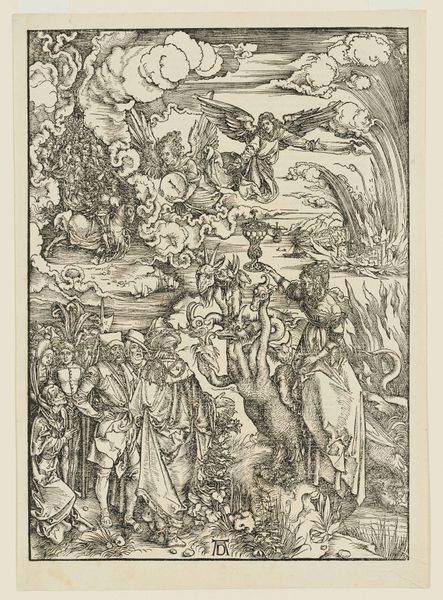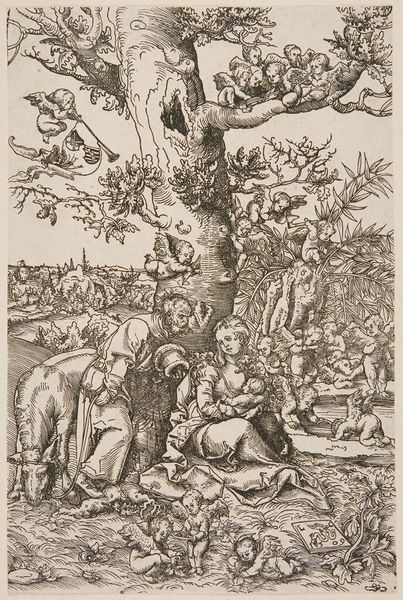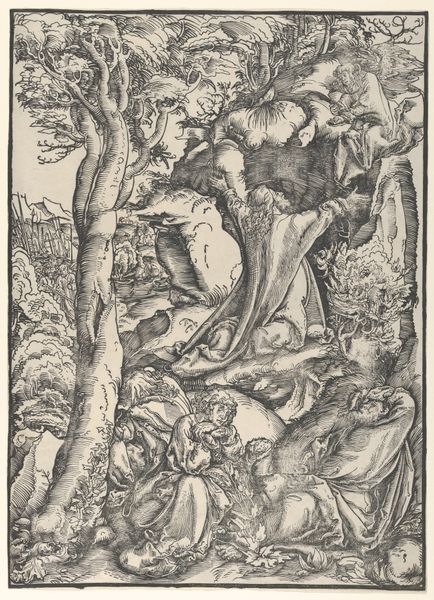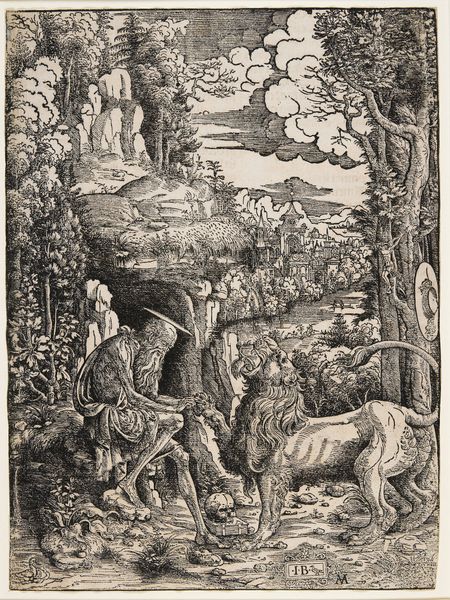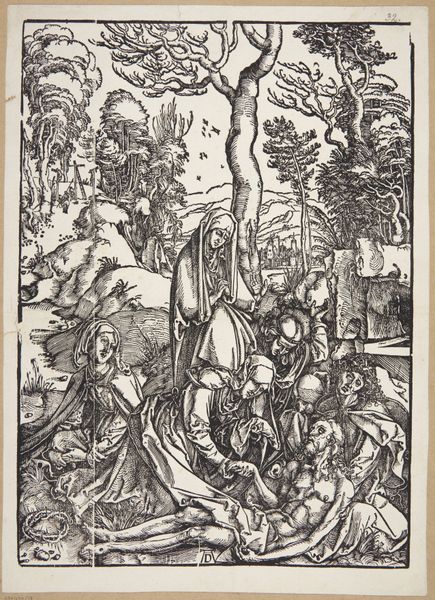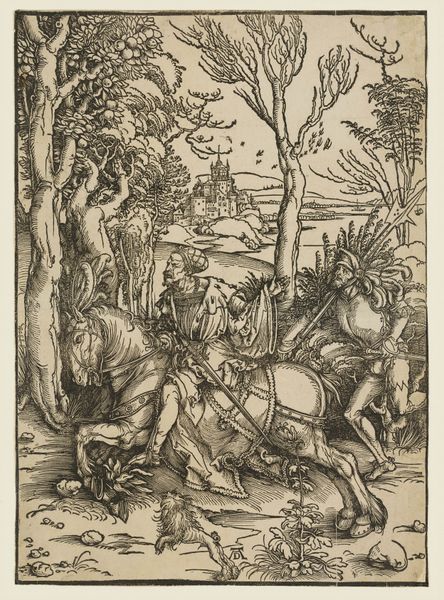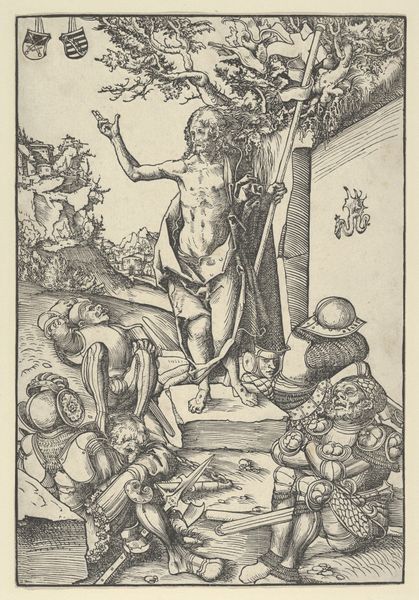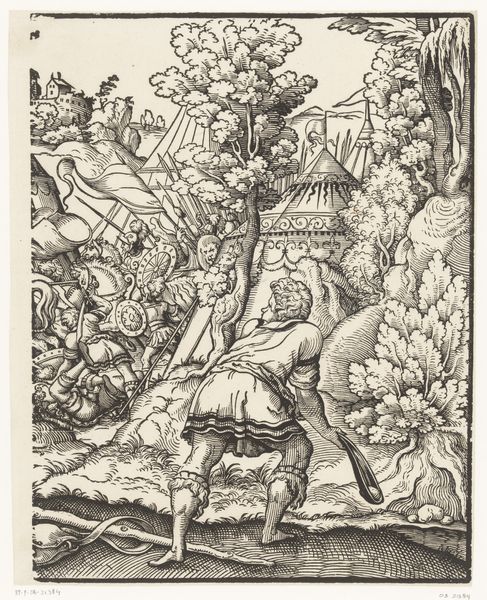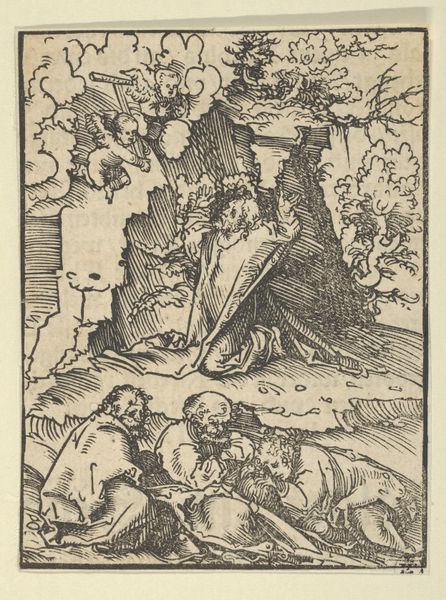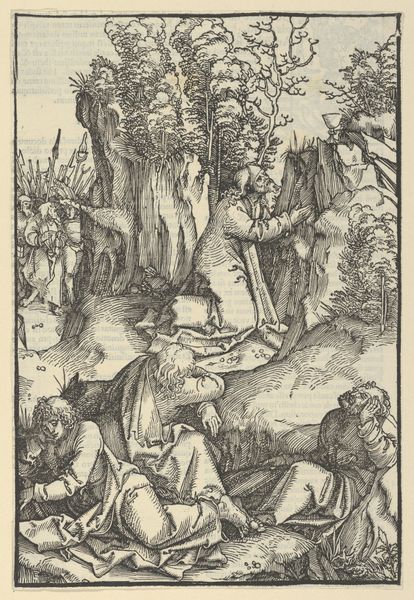
tempera, print, woodcut
#
narrative-art
#
tempera
# print
#
landscape
#
figuration
#
madonna
#
child
#
woodcut
#
men
#
line
#
history-painting
#
northern-renaissance
#
angel
Dimensions: Sheet: 11 1/4 × 7 1/2 in. (28.6 × 19 cm)
Copyright: Public Domain
Curator: It’s intriguing how Cranach, in his "Rest on the Flight into Egypt," from 1509, melds the holy family's narrative with a scene bustling with angels. Editor: My first impression is how incredibly dense it is! It's bursting with figures, especially those cherubic angels; the texture of the woodcut really lends itself to that crowded feeling. Curator: Absolutely. Think about the production. Woodcuts like this were more accessible than paintings, bringing religious imagery to a wider audience. Each line carefully carved into the block determined the image’s distribution and reception. Editor: It’s amazing to consider that reproducibility. The choice of printmaking immediately transforms the meaning and availability of the religious subject for its 16th-century public. Curator: It allowed Cranach, working within the constraints of printmaking techniques, to play with symbolism in a particular manner. For example, the positioning of the figures in relation to the landscape seems so deliberately planned, with the figures' quiet respite framed by active, even mischievous angels. Editor: Those mischievous angels strike me as an interesting visual device for signaling the holy status of Mary and Jesus, making the miraculous seem almost commonplace amidst their journey's material hardship. Curator: The northern renaissance favored these intricate and highly textured woodcuts. Cranach has cleverly interwoven his own commentary through this medium, considering both the symbolic narrative and the socioeconomic impact that multiple editions could generate. Editor: Seeing how he navigates that intersection is really fascinating. Cranach is showing us not only a religious scene, but he’s also telling a larger story about art, accessibility, and cultural production during the early 16th century. Curator: It offers a glimpse into a time when art was both a devotional tool and an object of increasingly broad distribution. Editor: Agreed; Cranach has masterfully shown how those dual roles intertwined through this captivating image.
Comments
No comments
Be the first to comment and join the conversation on the ultimate creative platform.

